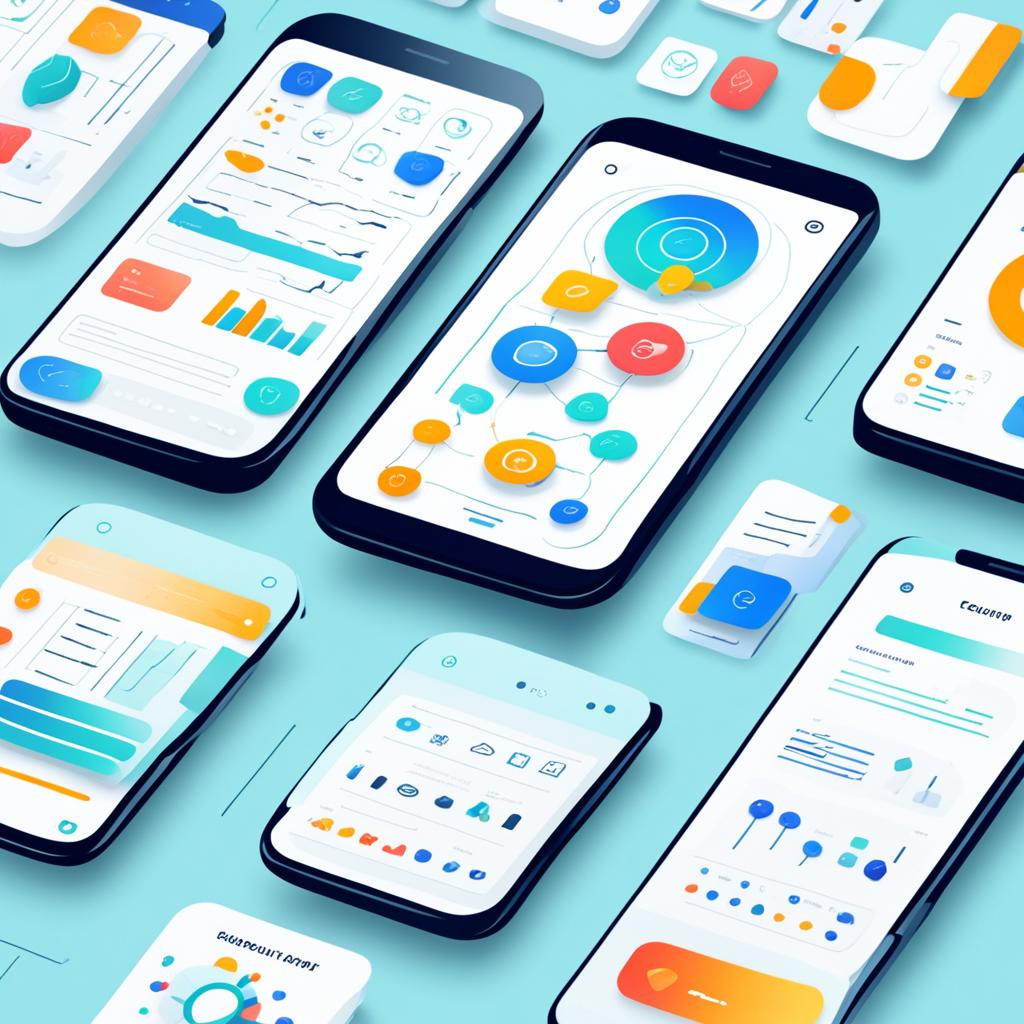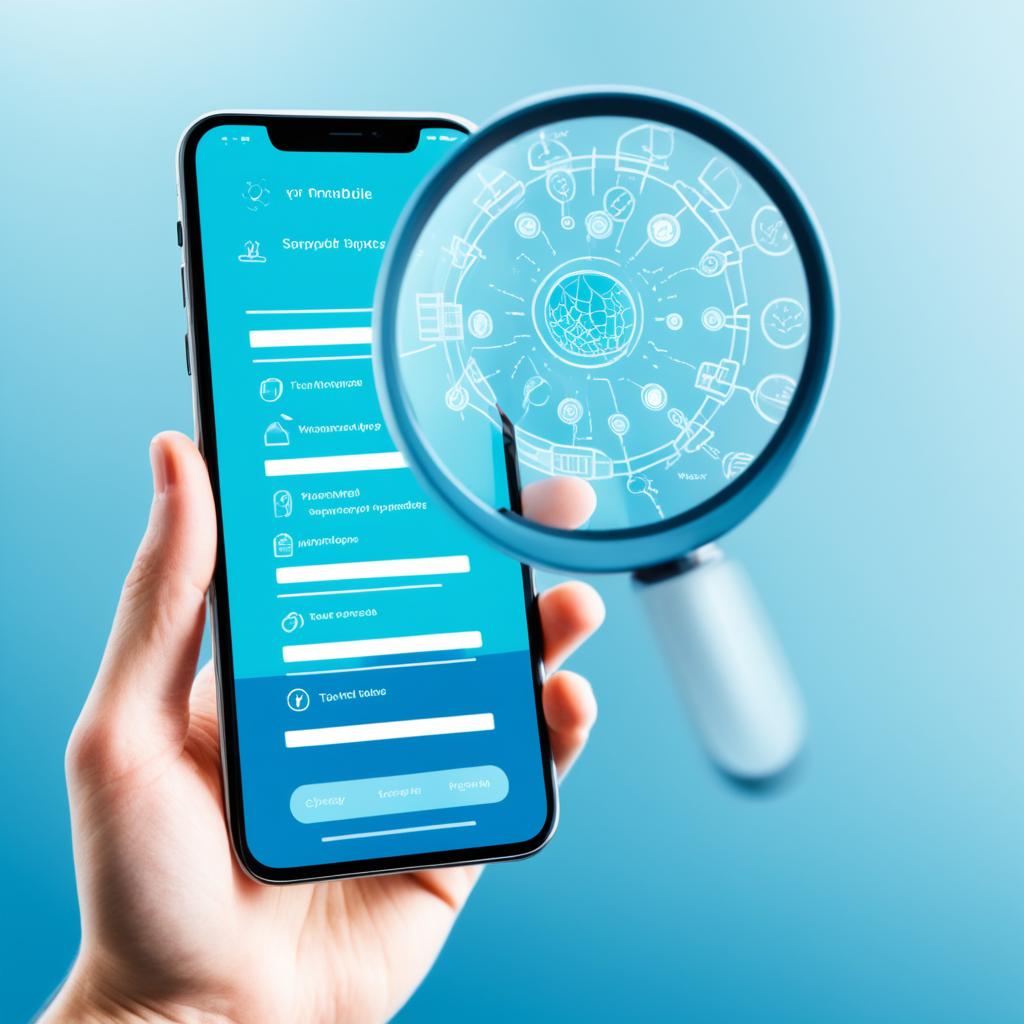O mobile app development It is a process that requires time, dedication and technical knowledge. Every step of the process, from conception to launch in app stores, is critical to the success of your app. In this article, we will present a complete guide to help you develop your first mobile app, providing tips and a step by step to create an app for Android and iOS.
Before we dive into app development, it's important to understand the process as a whole. Developing an app involves creating a concept, defining features, planning the design, developing the code, testing and launching. Each of these steps must be carried out with care and attention to detail.
To create a successful application, it is essential to know the development tools available and apply the best market practices. Additionally, it's important to stay up to date with industry trends and user preferences.
By following this comprehensive guide, you will be equipped with the knowledge you need to begin your journey into the world of mobile app development. Be prepared to learn, experience and overcome challenges along the way. Remember that app development is an ongoing process, and it's important to stay up to date and constantly seek to improve your skills.
Ready to start developing your first mobile app? Keep reading to discover the step-by-step instructions and best practices for creating a successful app!
Main points covered in this article:
- Step by step to create an app mobile
- Tips for app development beginners
- How to create an app for Android and iOS
- Complete guide to developing your first app
- App development tools
- Tutorials for beginners in mobile app development
Step 1: Describe the app’s features
When developing a mobile application, it is essential to clearly and comprehensively describe the functionalities it will offer to users. A good application is one that can translate users' desires and needs into specific functions and features.
It is important to consider that the popularity of an application is directly related to its usability. The more intuitive and easy to use the app, the greater its acceptance among the public. Therefore, it is essential to translate users' desires into efficient and easily accessible functionalities.
An efficient strategy for developing an app with relevant features is to analyze and be inspired by other mobile apps that are already popular on the market. Studying the benchmarks and best practices used by successful apps can help you identify trends, useful features, and innovative solutions.
See too:
Additionally, it is important to consider user experience from the beginning of the app development process. Putting yourself in users' shoes and understanding their needs and expectations is fundamental to creating an application that offers a satisfying and intuitive experience.
To summarize, when describing your app's functionalities, remember:
- Translate users' desires into specific functions;
- Search for references in other popular mobile applications;
- Consider user experience from the beginning of the development process.
By following these guidelines, you will be on the right path to creating a successful application, with relevant features, popularity among users and a unique experience.
Example of app features:
| Functionality | Description |
|---|---|
| 1. User registration | Allows users to create an account and provide personal information to access the app. |
| 2. Product search | It enables users to search and find products according to their preferences and needs. |
| 3. Shopping Cart | It allows users to add products to the cart and checkout quickly and easily. |
| 4. Notifications | Sends messages and alerts to users about relevant promotions, news and updates. |
| 5. Ratings and comments | It allows users to rate products and leave comments, helping other users to make decisions. |

Step 2: Sketch your app
Before starting to develop the application, it is important to make a sketch to organize your ideas. This outline should include texts, images It is supporting drawings so that the team clearly understands the expectations regarding the application. Use the GitHub as a management tool it can be beneficial to control product versions and allow you to roll back if something goes wrong.
A detailed sketch of the app helps you visualize what the interface and navigation structure will look like. It's a way to create a bird's eye view of the project before starting coding. Furthermore, the outline allows identify possible failures and improvements, ensuring that the final product meets users' expectations.
Application outline components
A well-crafted outline includes the following components:
- Description of the application's main functionalities;
- Interface layout, with the arrangement of visual elements;
- Navigation flow between screens;
- Screen prototypes that represent different interactions;
- Sketch of data architecture and necessary integrations;
- Content requirements, such as texts and images;
- Supporting drawings, if necessary, for a better visual understanding of the design.
These elements help convey the product vision and provide a clear guide for app development.

Using GitHub to manage application versions
O GitHub is a version control tool widely used by software developers and can be applied in the context of mobile application development. When using the GitHub, you can create repositories for your project, where all versions of the application can be stored and managed. This allows you to return to previous versions of the application if something doesn't go as planned or there is a need to reference a previous version.
Additionally, GitHub facilitates collaborative teamwork by allowing team members to share and review application code, as well as provide feedback on updates made. This way, application development can be more efficient and organized.
| Benefits of using GitHub in app development | How GitHub can be applied |
|---|---|
| Versioning of changes made to the application source code | Create a GitHub repository for your app and upload the source code |
| Team collaboration, allowing members to share and review code | Add team members to the repository and assign appropriate permissions |
| Application version management and possibility of returning to previous versions | Use GitHub's versioning features to manage application versions |
Therefore, make a detailed sketch of your application, including descriptions of the functionalities, text, images It is supporting drawings. Use tools like GitHub to manage product releases and ensure you have a clear vision of the application before you start developing. This advance planning will contribute to the success of your mobile app.
Step 3: Work on your design
In addition to being functional, your mobile app must also be aesthetically pleasing. Therefore, it is important to work on the application design, seeking innovation and highlighting its features and functionalities. You can do the design by yourself or hire a professional to help. However, it is crucial not to compromise the visual quality of the app as this can affect the user experience.
One beautiful app it is more attractive and can increase user engagement. Innovate in design It's an excellent way to stand out in the competitive app market. When designing your app, consider the features and functionalities that you want to offer users.
If you have design skills, you can work on your app on your own. There are several tools and resources available, such as prototyping apps and image editing programs, that can help you with this process. However, if you don't feel confident in your design skills, it is highly recommended hire a professional to ensure high quality design.
A design professional has technical knowledge and experience in creating intuitive and visually appealing interfaces. They can help turn your ideas into an efficient design, ensuring the app is pleasing to the eyes of users.
However, whether you work on the app design yourself or hire a professional, it is essential not to neglect the importance of design. Delivering a bad look can negatively impact the user experience and reduce your app's credibility.
Step 4: Test your prototype
Before completing application development, it is essential to test the prototype to identify possible failures and improvements. Prototype testing allows you to get a concrete idea of what the user experience will be like and helps predict possible problems in application interactions. It is an important step to ensure the quality and usability of your mobile application.
To test your prototype, it is recommended to follow the following steps:
- Identify possible failures: During testing, check for any functionality that is not working correctly, bugs, or typographical errors.
- Analyze dead-end flows: Check your app for flows that don't have a clear exit or that direct the user to an incorrect page.
- Evaluate user interaction: Observe how users interact with the prototype, whether there are difficulties in navigation, confusion when performing actions or problems when filling out forms.
- Carry out concept testing: Get feedback from users about the overall app experience, whether it meets their needs and expectations.

After carrying out the tests, analyze the results and make the necessary improvements to your prototype. Repeat the testing process as many times as necessary until your application is fully functional and provides a satisfactory user experience.
Conclusion
Mobile app development is a complex task that requires specific knowledge and technical skills. Creating an app from scratch can be challenging, especially for those without programming experience. Furthermore, it is essential to take into account the costs and risks involved.
A viable alternative for those who want to avoid these challenges is to outsource the creation of the application to a company specialized in app development. By relying on trained professionals, you can obtain a quality application, tailored to meet your needs and desires. Additionally, outsourcing reduces your workload and allows you to focus on other tasks related to your business.
However, regardless of the option chosen, it is essential to plan and follow steps to ensure an exceptional final result. These steps include describing the app's functionalities, making a sketch, working on the design, testing the prototype, and finally launching the app on app stores.
In short, if you have app development knowledge, patience and sufficient financial resources, creating an app on your own could be an option. However, if you prefer to avoid the risks and challenges associated with development, outsourcing app creation is a wise choice. Remember that in both cases, proper planning and attention to detail are essential to ensure a quality app and success in the mobile market.



